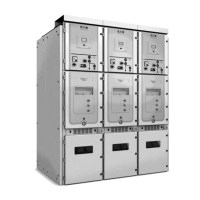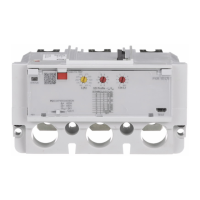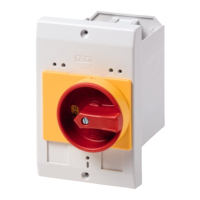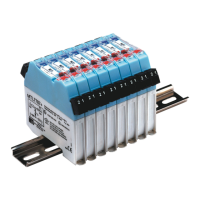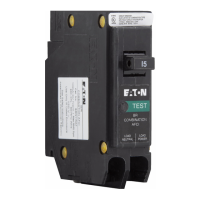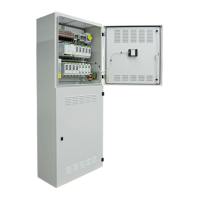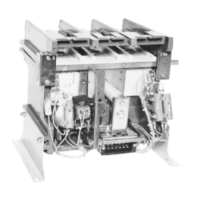1 DC1 device series
1.8 Output reduction (derating)
DC1…20… and DC1…OE1 Variable Frequency Drives 02/20 MN040059EN www.eaton.com 31
Examples showing how to apply derating factors
2.2 kW motor (400 V, 5 A), installation altitude of 2,000 m above sea level,
ambient temperature of 45 °C, wall-mounted in mechanical room, required
switching frequency of 16 kHz.
a)
Selected variable frequency drive: DC1-349D5FB-A6SOE1, rated operational
current of 9.5 A, switching frequency of 8 kHz (default setting).
Required derating factors:
• For the 16 kHz switching frequency: 35 %
• For the 2,000 m installation altitude: 10 % (1 % per 100 m above
1,000 m, 2,000 m - 1,000 m = 1,000 m, 1,000 m/100 m = 10)
• For the 45 °C ambient temperature: 12.5 % (2.5 % per kelvin,
45 °C - 40 °C = 5 K, IP66 degree of protection)
9.5 A - 35 % - 10 % - 12.5 % = (9.5 x 0.65 x 0.9 x 0.875) A = 4.86 A
The DC1’s permissible continuous rated operational current of 4.86 A is
lower than the motor’s required rated operational current (5 A).
By using the default switching frequency instead (default setting: 8 kHz),
the motor can be operated continuously at an altitude of 2,000 m
(9.5 A - 10 % - 12.5 % = 6.73 A).
b)
In order to be able to work with the required switching frequency of 16 kHz,
a larger variable frequency drive would be needed.
Selected variable frequency drive: DC1-34014FB-A6SOE1, rated operational
current of 14 A.
Required derating factors:
• For the 16 kHz switching frequency: 35 %
• For the 2,000 m installation altitude: 10 % (1 % per 100 m above
1,000 m, 2,000 m - 1,000 m = 1,000 m, 1,000 m/100 m = 10)
• For the 45 °C ambient temperature: 12.5 %
(2.5 % per kelvin, 45 °C - 40 °C = 5 K, IP66 degree of protection).
14 A - 35 % - 10 % - 12.5 % = (14 x 0.65 x 0.9 x 0.875) A = approx. 7.2 A
The DC1-34014FB-A6SOE1 variable frequency drive meets the necessary
operating conditions.
→
Use a variable frequency drive belonging to a higher output
class and repeat the calculations in order to ensure that a
sufficiently high output current will be available continuously.
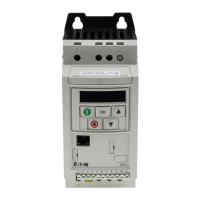
